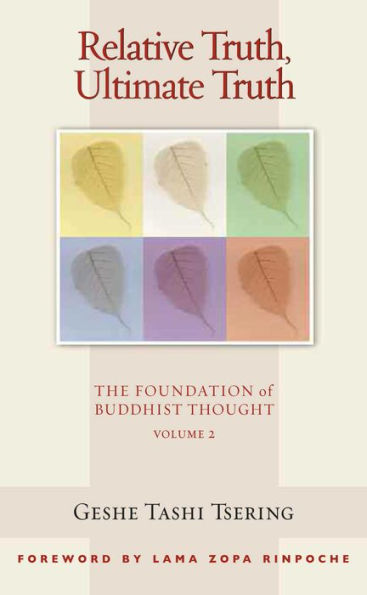Relative Truth, Ultimate Truth: The Foundation of Buddhist Thought, Volume 2
Relative Truth, Ultimate Truth is a clear and remarkably practical presentation of a core Buddhist teaching on the nature of reality. Geshe Tashi Tsering provides readers with an excellent opportunity to enhance not only thier knowledge of Buddhism, but also a powerful means to profoundly enhance their view of the world.
The Buddhist teaching of the "two truths" is the gateway to understanding the often-misunderstood philosophy of emptiness. This volume is an excellent source of support for anyone interested in cultivating a more holistic and transformative understanding of the world around them and ultimately of their own conciousness.
1136789695
The Buddhist teaching of the "two truths" is the gateway to understanding the often-misunderstood philosophy of emptiness. This volume is an excellent source of support for anyone interested in cultivating a more holistic and transformative understanding of the world around them and ultimately of their own conciousness.
Relative Truth, Ultimate Truth: The Foundation of Buddhist Thought, Volume 2
Relative Truth, Ultimate Truth is a clear and remarkably practical presentation of a core Buddhist teaching on the nature of reality. Geshe Tashi Tsering provides readers with an excellent opportunity to enhance not only thier knowledge of Buddhism, but also a powerful means to profoundly enhance their view of the world.
The Buddhist teaching of the "two truths" is the gateway to understanding the often-misunderstood philosophy of emptiness. This volume is an excellent source of support for anyone interested in cultivating a more holistic and transformative understanding of the world around them and ultimately of their own conciousness.
The Buddhist teaching of the "two truths" is the gateway to understanding the often-misunderstood philosophy of emptiness. This volume is an excellent source of support for anyone interested in cultivating a more holistic and transformative understanding of the world around them and ultimately of their own conciousness.
17.99
In Stock
5
1

Relative Truth, Ultimate Truth: The Foundation of Buddhist Thought, Volume 2
208
Relative Truth, Ultimate Truth: The Foundation of Buddhist Thought, Volume 2
208
17.99
In Stock

Product Details
| ISBN-13: | 9780861719471 |
|---|---|
| Publisher: | Wisdom Publications MA |
| Publication date: | 10/10/2008 |
| Series: | The Foundation of Buddhist Thought , #2 |
| Sold by: | SIMON & SCHUSTER |
| Format: | eBook |
| Pages: | 208 |
| File size: | 1 MB |
About the Author
From the B&N Reads Blog
